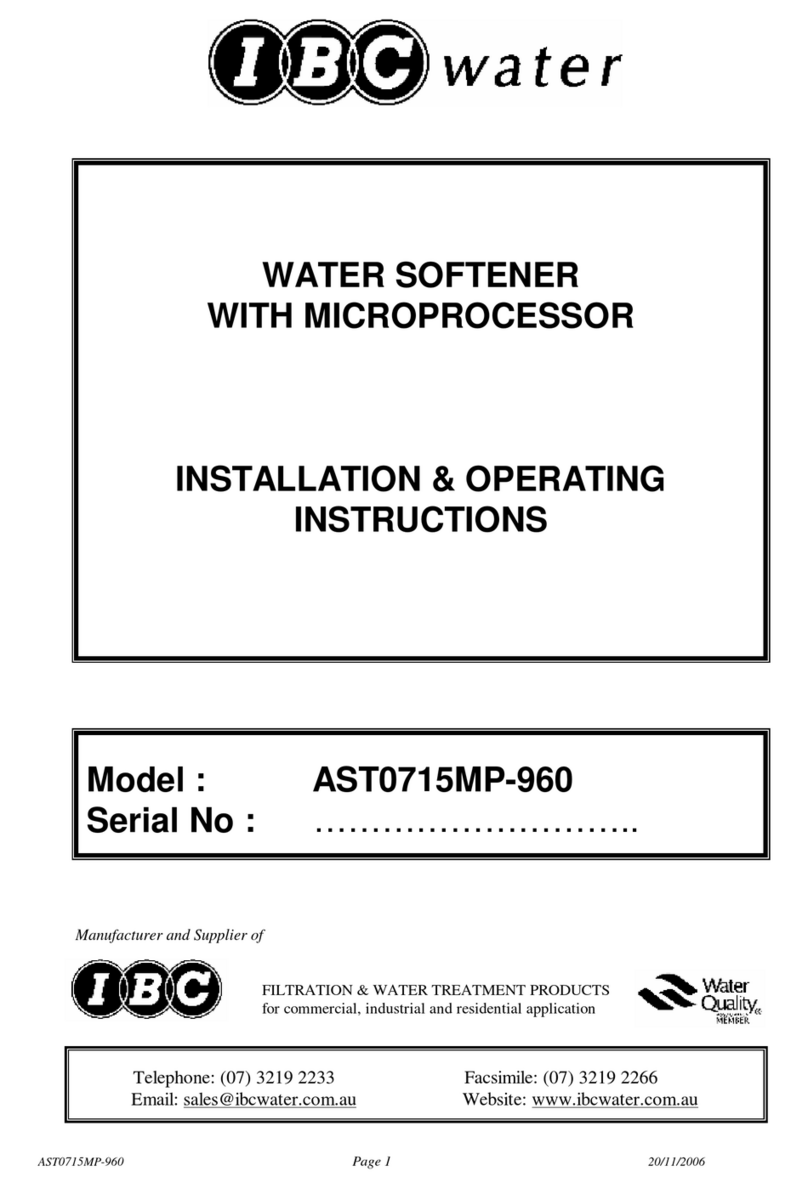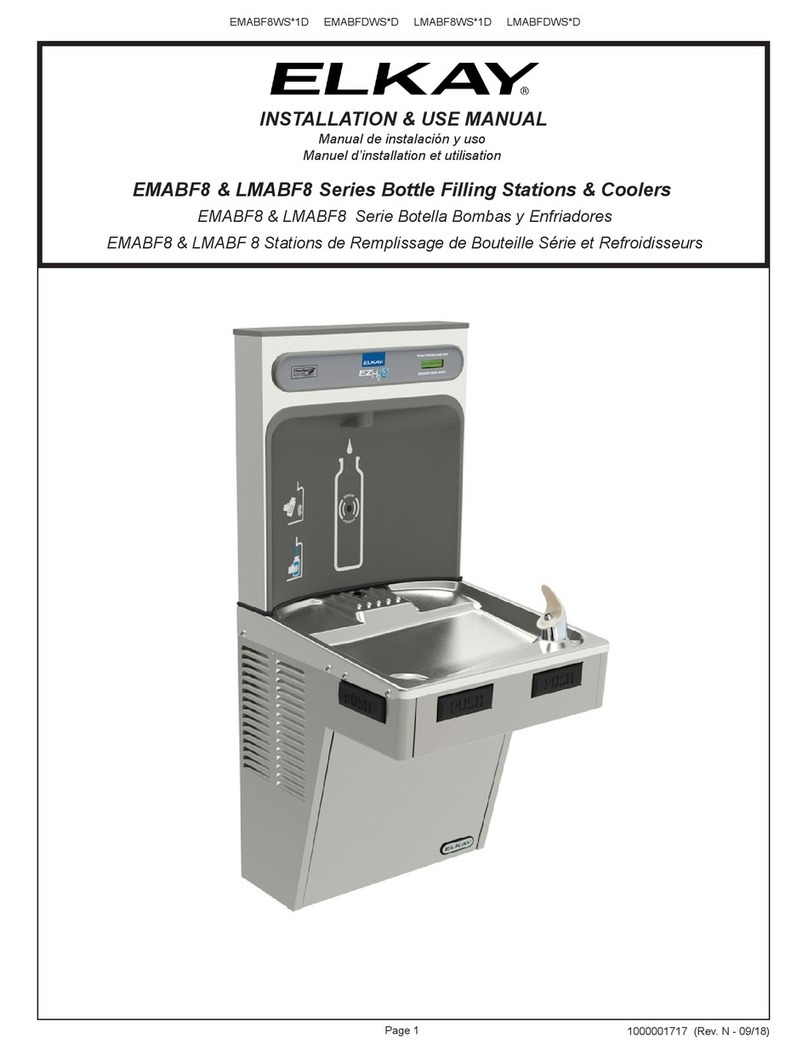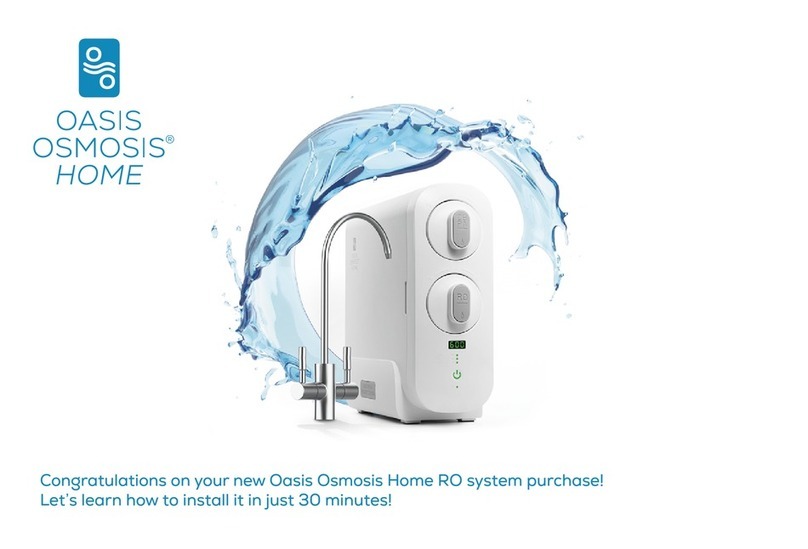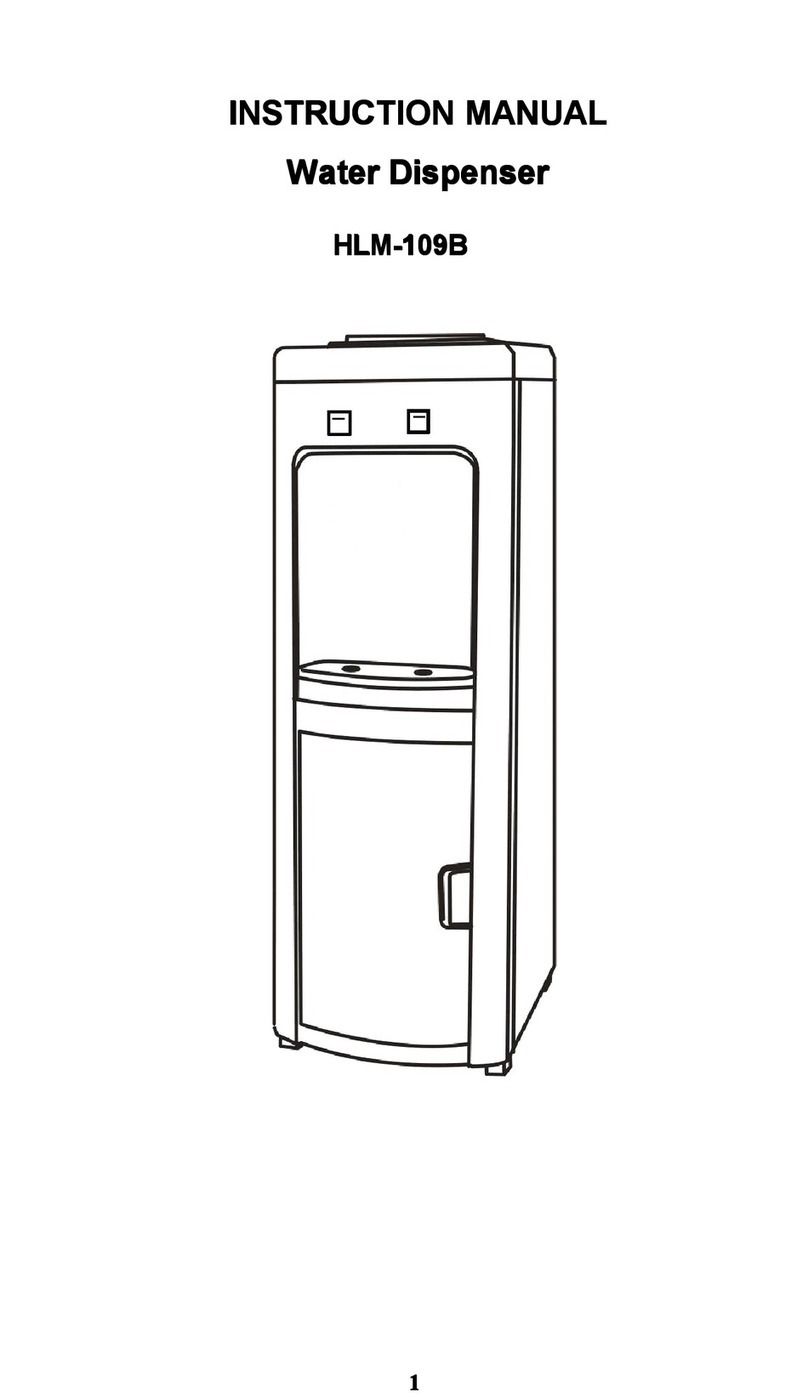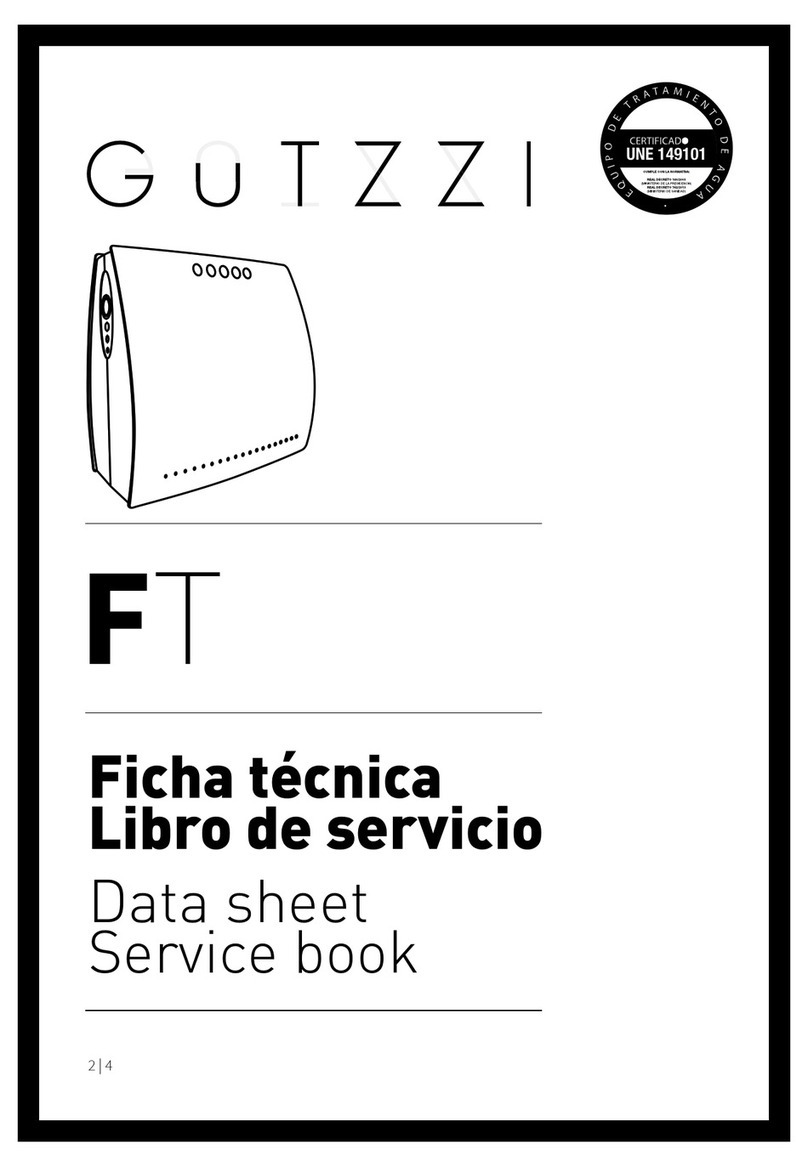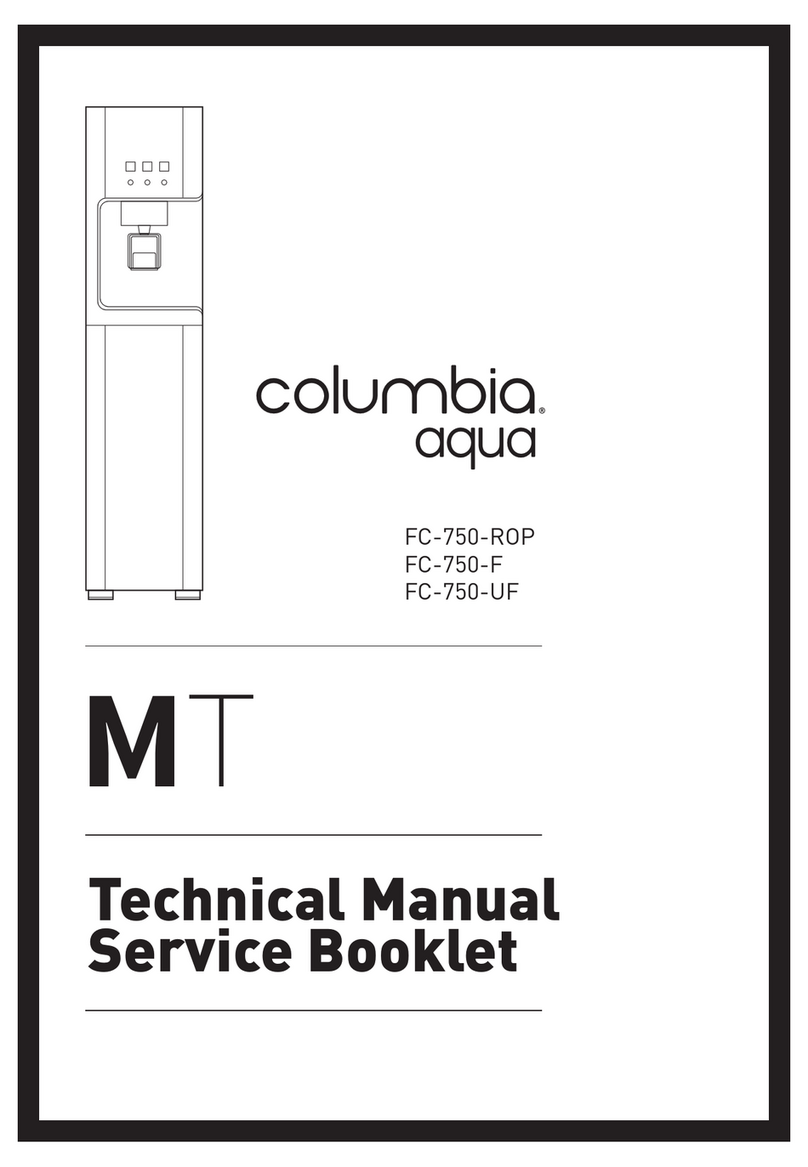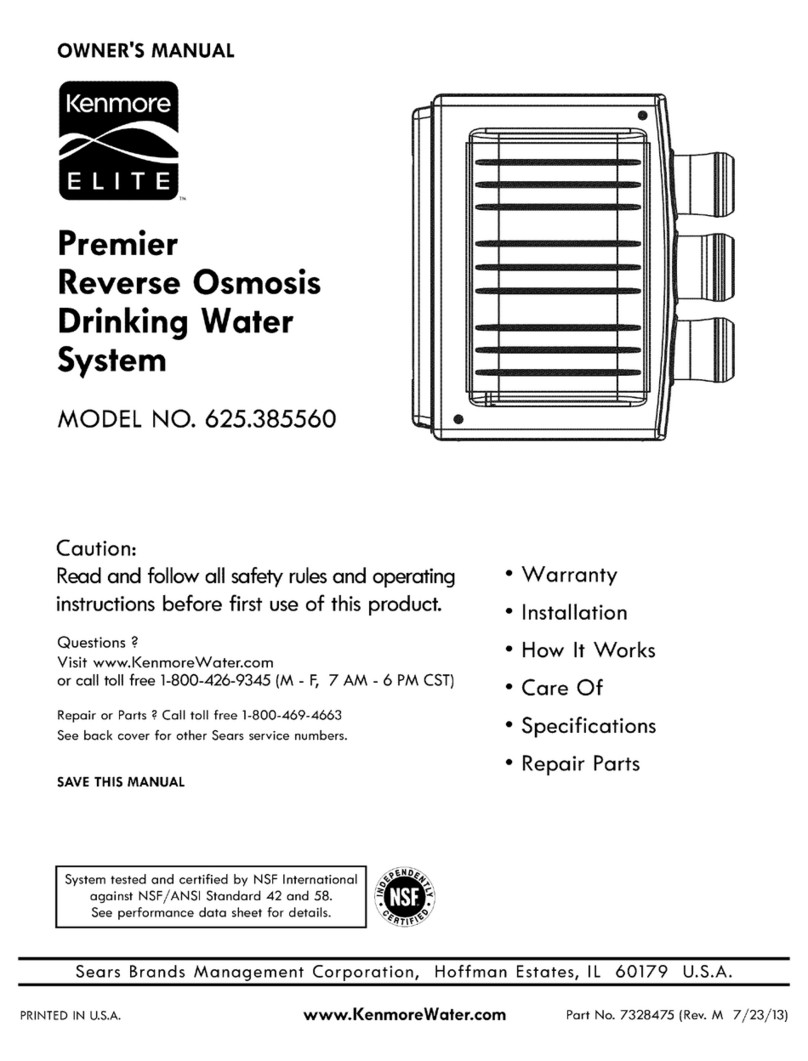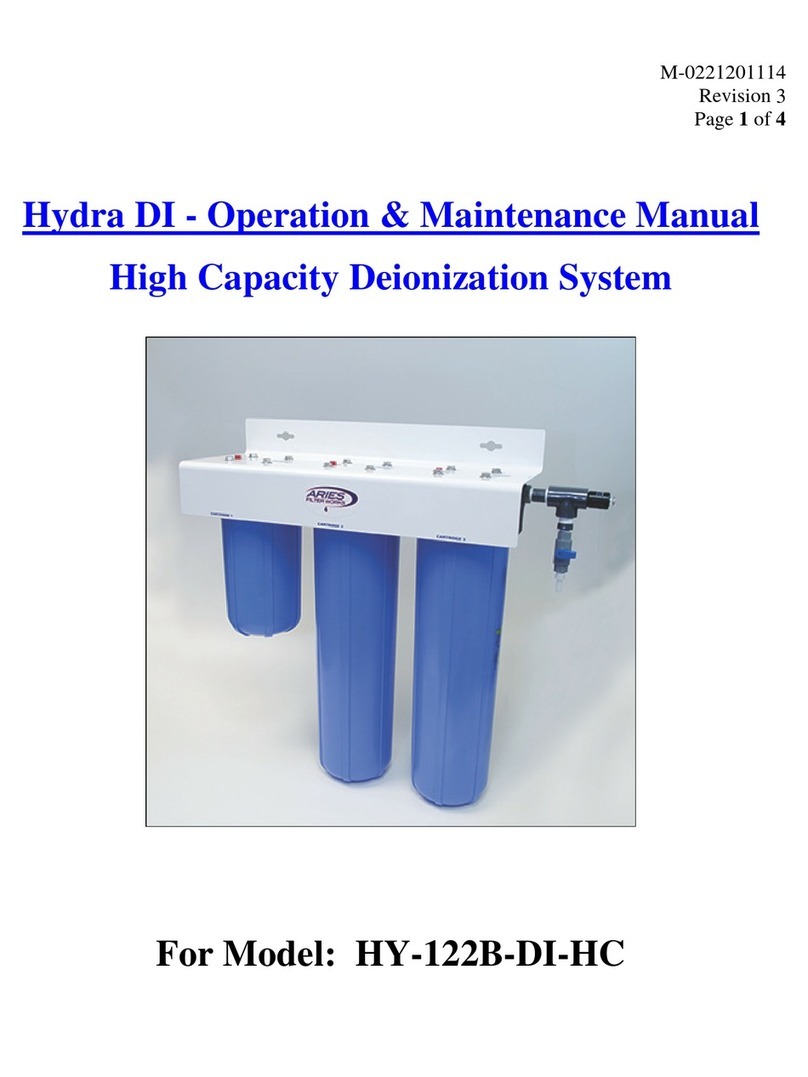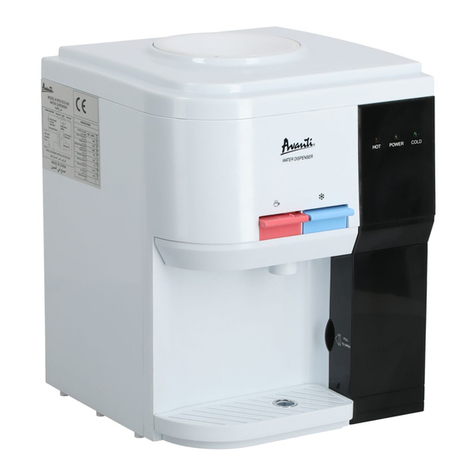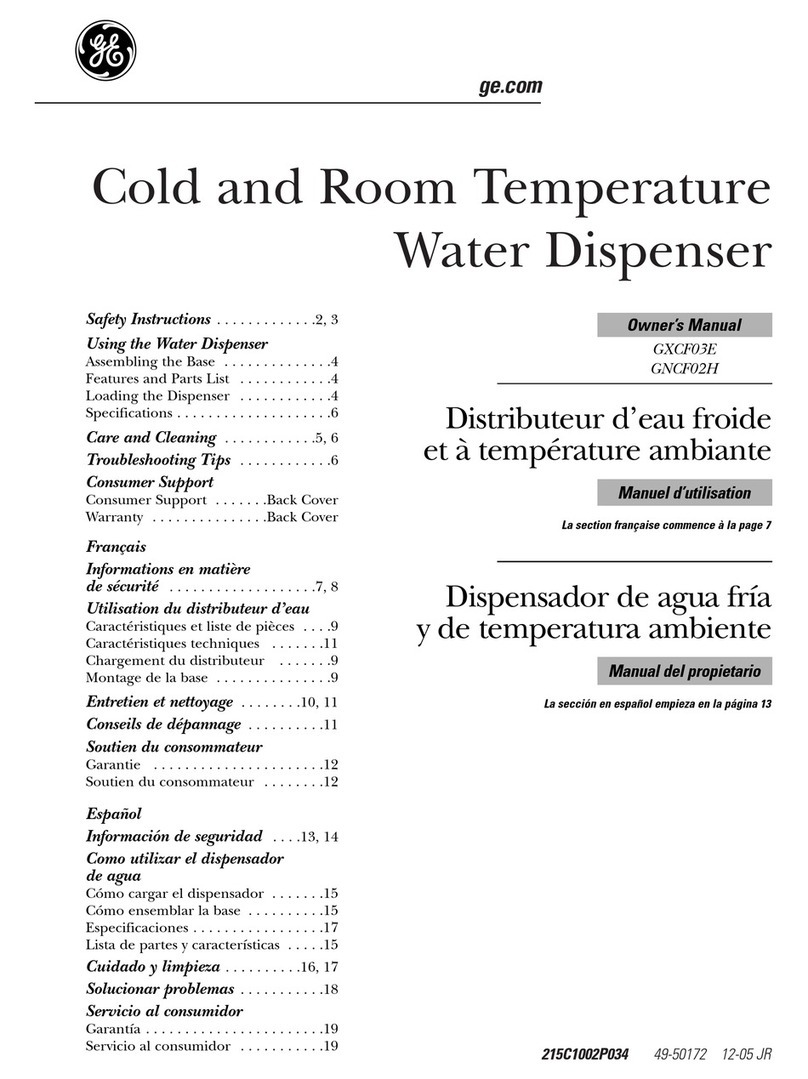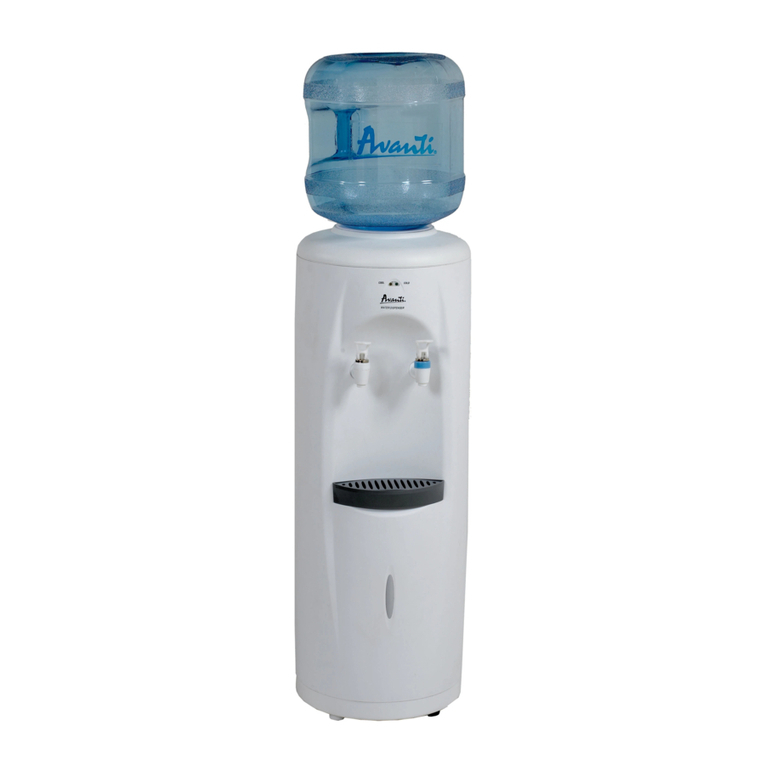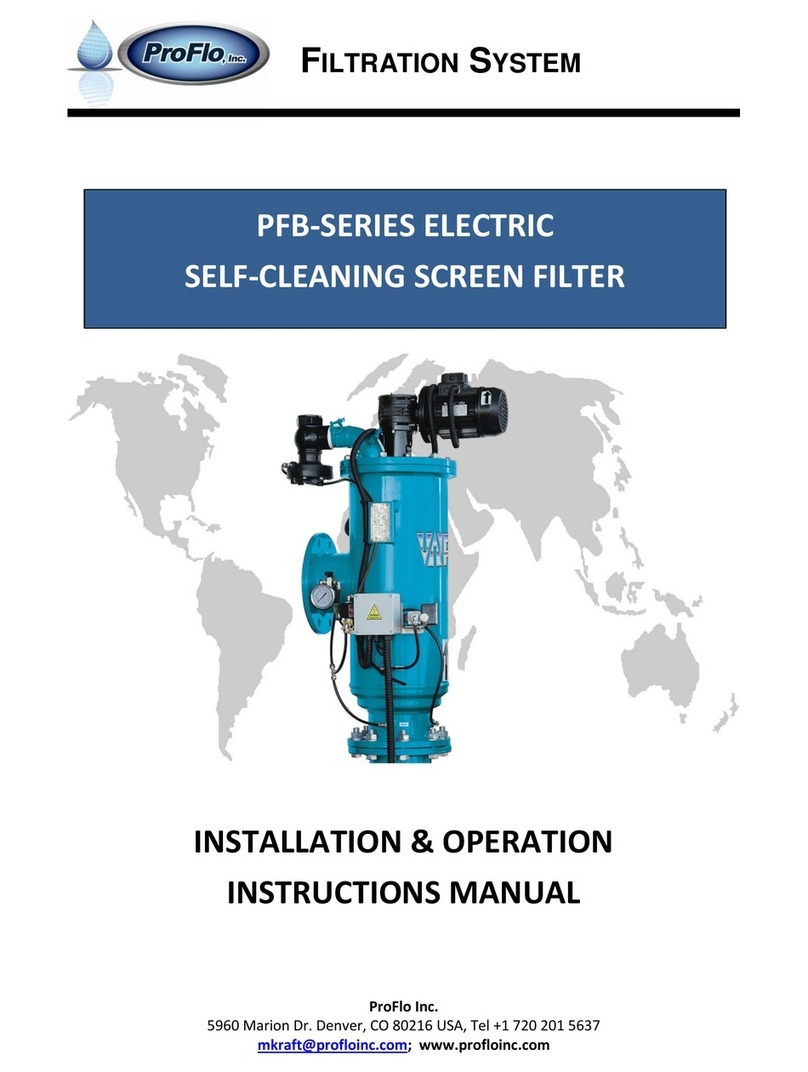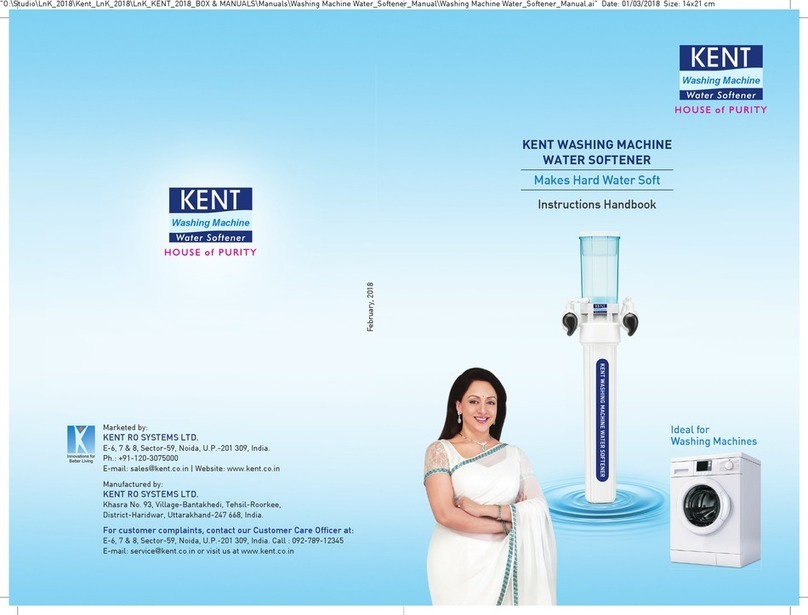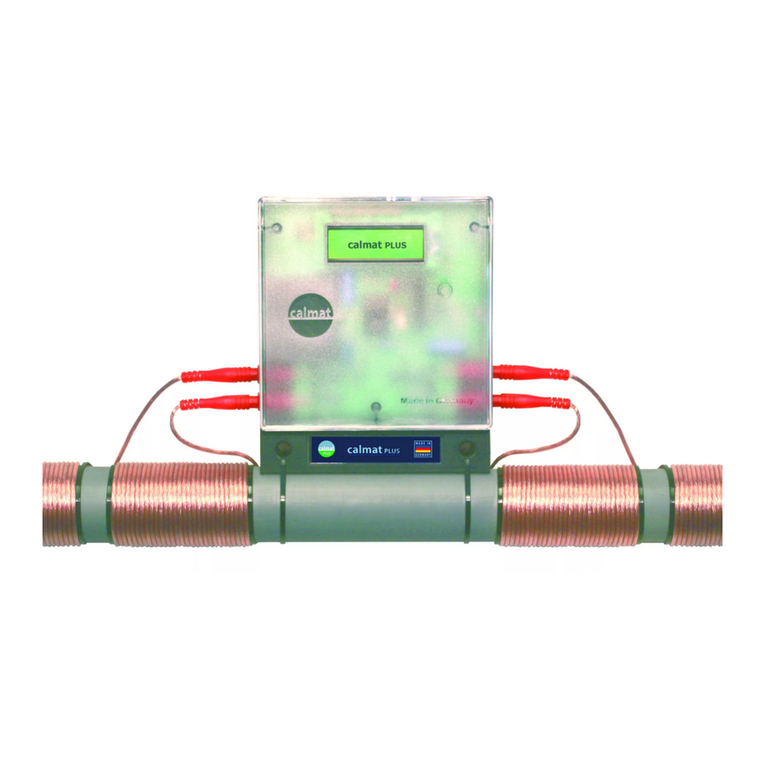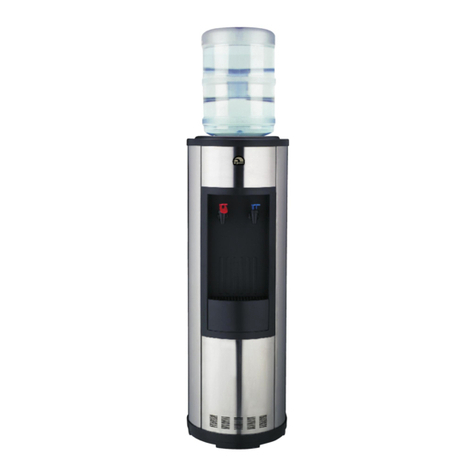
Español
User Manual
6
ing utensils, connections and plumbing fixtures. It may
even alter the taste of food.
Main problems:
· Precipitation on pipes, fixtures and appliances.
· Incrase of the energy consumption due to the generated
isolation.
· Higher soap consumption
· Reduction of the electical appliances’ service life and
increase of the maintenance needed.
All these problems are greatly reduced when using a wa-
ter soening system.
For the most part of Europe, hardness is indicater in
French hydrometic degrees, but there are also other
measuring units, according to each region.
Below are the most usual equivalences.
How does your system work?
Water soening is carried out by means of an ion ex-
change process. On this purpose, the system uses resins
with the chemical capacity of capturing Calcium (Ca) and
Magnesium (Mg) ions and removing them from water.
When Calcium and Magnesium ions are captured by the
resin, two Sodium (Na) ions are released which, due to its
chemical properties, produce salts with a higher solubili-
ty , thus avoiding all hardness-related problems.
Therefore, when water gets soened, its sodium level
increases.
Further information on this procedure can be found in
‘Section 2.8’.
Ion exchange resins:
They are synthetic compounds, usually with a spherical
shape, able to capture certain chemical substances pres-
ent in water, which then exchange for other substances.
Water soening uses strong cation resins, which are com-
posed of styrene copolymers and divinylbenzene with a
sulphur base.
The exchange resin charge is located inside the vessel of
the soener, attending an important part of volume of
the same (between 60 and 75% depending on the model).
It is compulsory that one part of the vessel remains free to
allow a correct regeneration of the resin bed.
During the treatment process the water gets through the
multiway valve by the entrance connection, flows to the
upper part of the soener through the distributor produ-
cing this way an ionic exchange inside the resin bed.
The treated water is collected by the distributor and dri-
ven through the inner tube through the vessel till the mul-
tiway valve. It is sent with the out connection till the main
water pipe for consumption. In this point the system has
a counter for treated water to be contabilized.
2.3 Regeneration of the system
The quantity of calcium and magnesium ions that the
resin may retain is limited; therefore, the water volume
a water soener can treat is limited as well. The system
must periodically carry out a process known as regenera-
tion, which allows the resin to recharge with sodium ions,
so it can continue soening water.
In RIDER systems the regeneration process starts auto-
matically when the systems detects that the exchange ca-
pacity is going to finish, the timer incorporated in the sys-
tem allows to configurate in a dierent way the starting
of the regeneration, please see section 6.3 in order to get
more information about how the programme works.
The regeneration of a soener system is made of dierent
parts, each with a concrete finality
Backwashing:
The water gets into the vessel through an inferior collec-
tor, making a washing and a floing of the resin bed and
allowing, this way, the following regeneration process.
Brine aspiration:
Through an aspiration process for venturi eect the sys-
tem suctions the brine liquid solution previously prepa-
red for the regenerating tank. This salt solution is introdu-
ced into the soening vessel getting in contact with the
ionic exchange resin and starting the regeneration.
Slow rinse:
It refers to the movement in the resin bed of the salt so-
lution previosly aspirated, this way the contact of the salt
with the resin is higher and the regeneration of the same
is optimized.
UNITS
1 ppm of Calcium
1 ppm ofMagnesium
1 ppm de CaCO3
1º French (ºHF)
1º German (ºd)
1º Englisch (ºe)
1 mmol/L
1 mval/L=eq/L
ppm of CaCO3
2,5
4,13
1
10
17,8
14,3
100
50
º French
0,25
0,413
0,1
1
1,78
1,43
10
5
Conditioned water Water inlet
To the drain
Conditioned water
To the drain
Water inlet
Brine aspiration,
Venturi effect
